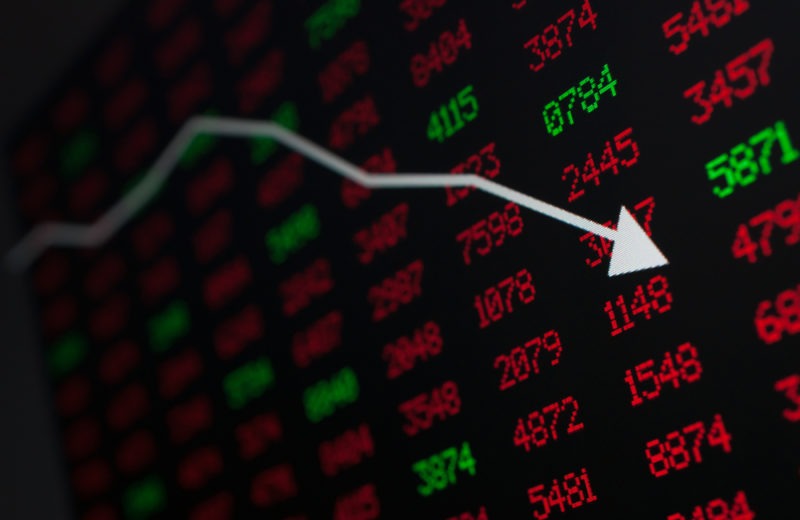Asian stock markets displayed a mixed performance on Tuesday, echoing concerns stemming from China’s recent announcement of weak July consumer and business activity. Additionally, China’s central bank’s decision to lower a key interest rate to support the struggling economy added further complexity to market sentiment.
In specific market moves, the Shanghai Composite Index saw a decline of 0.1%, settling at 3,174.59. This downturn was a result of a deceleration in Chinese consumer spending, factory output, and investment, all of which declined more than initially anticipated. In response, the People’s Bank of China made the decision to cut its interest rate on one-week loans to banks. Conversely, Tokyo’s Nikkei 225 gained 0.8%, closing at 32,315.61, while Sydney’s S&P-ASX 200 rose 0.6% to 7,320.60.
Korean markets remained closed due to a holiday, while New Zealand recorded gains. However, Singapore and Jakarta experienced declines in their respective markets.
China’s Economic Woes: Mixed Performance in Asian Stock Markets Amid Rate Cut
China’s economic landscape is currently characterized by leaders attempting to bolster growth without resorting to a broad stimulus that could exacerbate the country’s existing high debt levels. Official data recently unveiled indicated that growth in retail sales had further declined to 2.5% year-over-year in July, dropping from the previous month’s already low 3.1%. Factory output and investment growth also experienced a deceleration despite commitments from the ruling Communist Party to support entrepreneurs.
China’s economic growth is facing significant hurdles, with a slide to 0.8% in the three months ending June, compared to the 2.2% recorded in the January-March period.
Global Market Movements: Wall Street’s S&P 500 and Dow Jones Respond Positively
In contrast, on Wall Street, the S&P 500 buffer stock index experienced a gain of 0.6%, closing at 4,489.72 on Monday. This upward trend was observed ahead of an update on US retail spending, a factor that traders hoped would mitigate concerns about a potential recession.
The Dow Jones Industrial Average rose slightly by 0.1%, reaching 35,307.63, while the Nasdaq composite surged 1.1% to 13,788.33. In a notable development, U.S. Steel saw a remarkable jump of 36.8% after rejecting a buyout offer from Cleveland-Cliffs and receiving other offers. Cleveland-Cliffs itself experienced an 8.8% increase after indicating its readiness to offer more than $7 billion in an attempt to strike a deal immediately.
Best Day Trading Stocks: Traders Await the Release of Minutes from the Fed’s Latest Board Meeting
However, not all companies experienced positive market movements. Nikola faced a decline of 6.7% after recalling over 200 of its electric vehicles due to indications of a potential battery pack problem causing an earlier fire. The company previously raised concerns about foul play in a truck fire incident at its headquarters.
Amidst these developments, the S&P 500’s August performance has demonstrated a retreat of 2.2% after witnessing a remarkable 19.5% surge in the initial seven months of the year. Critics argue that Wall Street may have been too hasty in concluding that inflation is under control and that a recession can be averted.
Energy Market Trends: Benchmark U.S. Crude and Brent Crude Experience Fluctuations
In terms of upcoming market events, the US government is set to release monthly retail sales data on Tuesday. The data release is a pivotal report of the week. Analysts anticipate that this data will reveal an acceleration of growth to 0.4% in July, compared to June’s 0.2%.
On Wednesday, the Federal Reserve will release the minutes of its latest board meeting. Interestingly, the Central Bank’s main interest rate experienced its highest increase in over two decades. Market expectations anticipate the Fed maintaining steady rates at its forthcoming meeting, while some bets suggest a potential rate cut early next year.
Currency Movements: The Dollar and Euro Exhibit Slight Fluctuations in Response to Market Dynamics
In the energy markets, benchmark U.S. crude observed a slight increase of 8 cents. This way, it has reached $82.59 per barrel in electronic trading on the New York Mercantile Exchange. Brent crude, the foundation for international oil trading, also saw a modest gain of 11 cents, reaching $86.32 per barrel in London.
Finally, the foreign exchange market displayed some fluctuations, with the dollar declining to 145.46 yen from the previous day’s 145.52 yen. Conversely, the euro demonstrated an increase, rising to $1.0916 from the previous value of $1.0904.
















